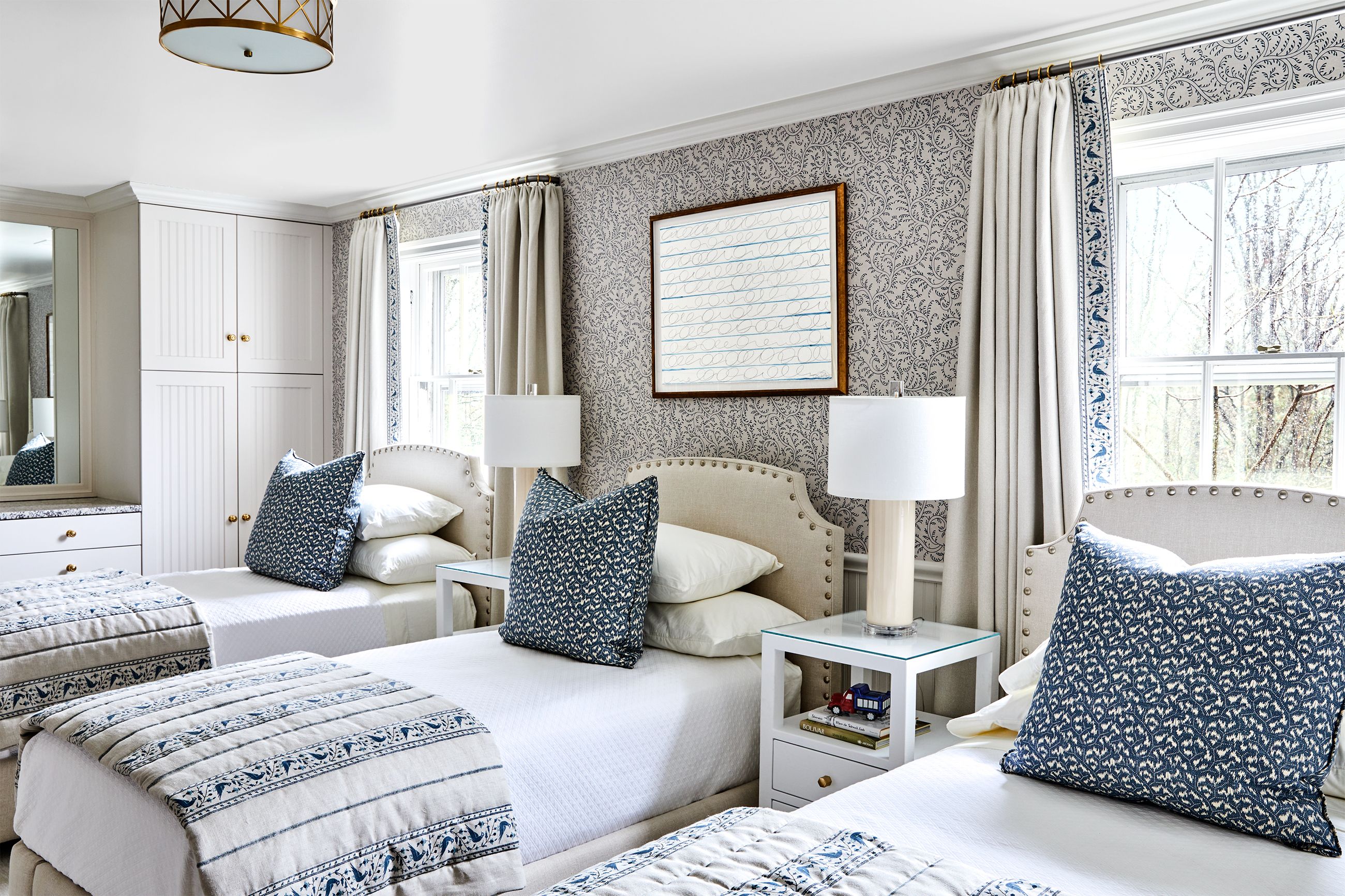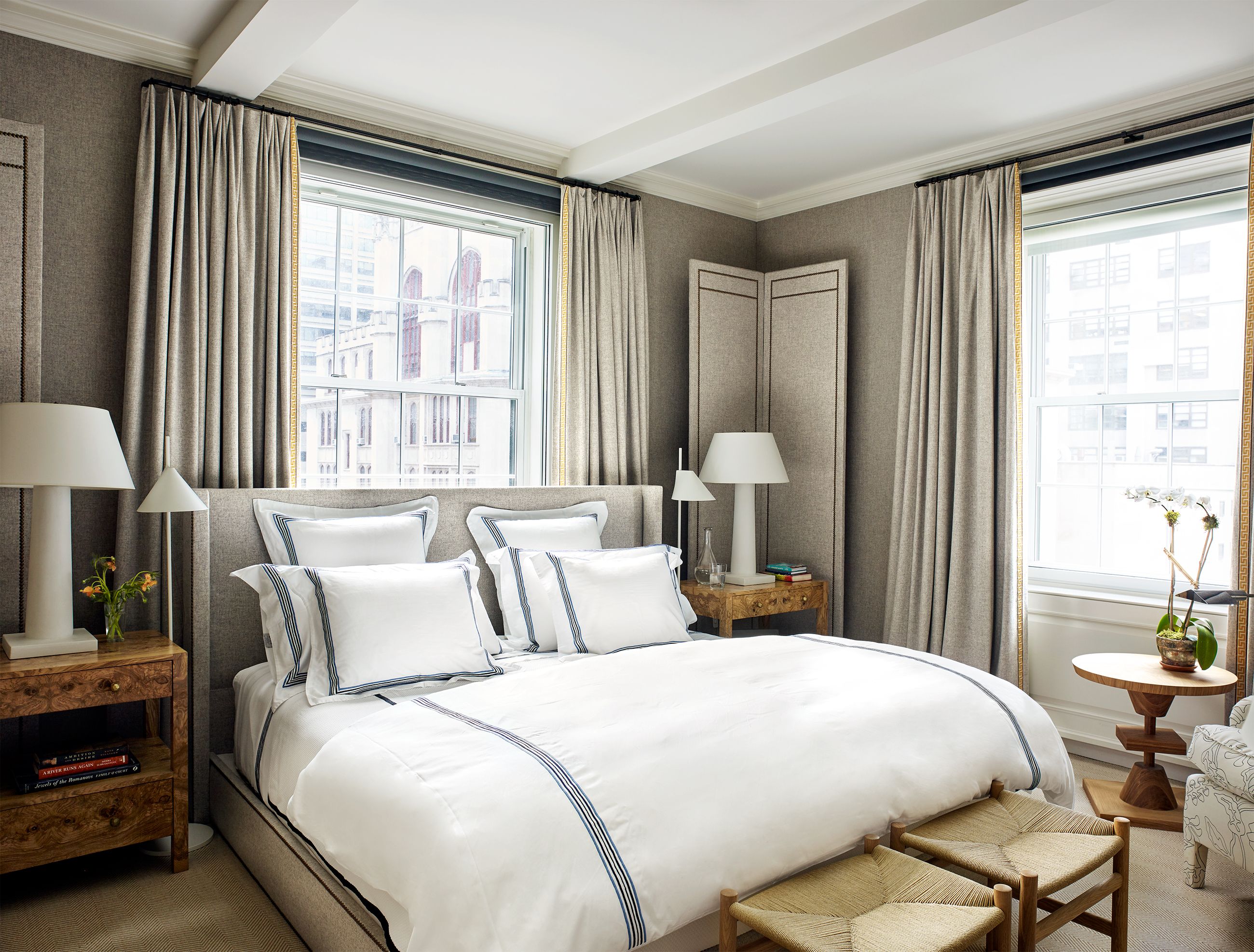Curtain Styles for Beautiful Bedrooms

Curtains are an essential element in creating a beautiful and functional bedroom. They not only enhance the aesthetics of the room but also provide privacy, light control, and sound insulation. With a wide array of styles available, choosing the right curtains can be a daunting task. This guide explores some of the most popular bedroom curtain styles, highlighting their characteristics, advantages, and disadvantages.
Types of Bedroom Curtain Styles
Curtain styles are categorized based on their design, functionality, and overall aesthetic appeal. Understanding these styles can help you choose the best curtains for your bedroom.
- Rod Pocket Curtains: These curtains have a sewn-in pocket at the top that slides onto a curtain rod. They are simple to hang and create a classic, timeless look.
- Tab Top Curtains: Featuring fabric loops at the top, these curtains are hung on a rod with decorative finials. They offer a casual and relaxed feel, perfect for bohemian or rustic bedrooms.
- Grommet Curtains: These curtains have metal rings (grommets) sewn into the top, allowing them to slide effortlessly across a curtain rod. They create a modern and sleek look and are easy to open and close.
- Eyelet Curtains: Similar to grommet curtains, eyelet curtains have metal rings sewn into the top, but the rings are smaller and have a decorative design. They provide a more traditional and elegant look.
- Pinch Pleat Curtains: These curtains have evenly spaced pleats that create a sophisticated and formal look. They are often used in traditional and formal bedrooms.
- Valance Curtains: These curtains are shorter than traditional curtains and are typically used as a decorative top treatment. They can be used to add a touch of elegance or to cover the top of the window and the curtain rod.
- Tier Curtains: These curtains are made of multiple panels that are hung at different lengths, creating a layered effect. They are often used in casual and cottage-style bedrooms.
- Sheer Curtains: These curtains are made of lightweight, translucent fabric that allows natural light to filter through. They offer a delicate and airy feel and can be used to add privacy without blocking out all light.
- Blackout Curtains: These curtains are designed to block out light completely, making them ideal for bedrooms that need to be dark and quiet. They are often made of thick, heavy fabric with a light-blocking lining.
Advantages and Disadvantages of Different Curtain Styles
Each curtain style has its own advantages and disadvantages, which should be considered when choosing the right curtains for your bedroom.
- Rod Pocket Curtains:
- Advantages: Easy to hang, classic look, affordable.
- Disadvantages: Can gather unevenly, may not be suitable for heavy fabrics.
- Tab Top Curtains:
- Advantages: Casual and relaxed look, easy to hang.
- Disadvantages: May not be suitable for formal settings.
- Grommet Curtains:
- Advantages: Modern and sleek look, easy to open and close.
- Disadvantages: May not be suitable for traditional settings.
- Eyelet Curtains:
- Advantages: Elegant and traditional look, easy to open and close.
- Disadvantages: May not be suitable for modern settings.
- Pinch Pleat Curtains:
- Advantages: Sophisticated and formal look.
- Disadvantages: Can be more expensive than other styles.
- Valance Curtains:
- Advantages: Add a decorative touch, can cover the top of the window and curtain rod.
- Disadvantages: May not provide enough privacy.
- Tier Curtains:
- Advantages: Casual and cottage-style look, can be used to create a layered effect.
- Disadvantages: May not be suitable for formal settings.
- Sheer Curtains:
- Advantages: Delicate and airy feel, allow natural light to filter through.
- Disadvantages: May not provide enough privacy.
- Blackout Curtains:
- Advantages: Block out light completely, provide privacy.
- Disadvantages: Can be expensive, may not be aesthetically pleasing in all settings.
Examples of Popular Curtain Styles
Here are some examples of popular curtain styles with detailed descriptions and images:
- Rod Pocket Curtains: These curtains are often made of simple, solid-colored fabrics like linen or cotton. They can be used to create a classic and timeless look in any bedroom.
- Grommet Curtains: These curtains are often made of modern fabrics like velvet or linen. They can be used to create a sleek and modern look in any bedroom.
- Sheer Curtains: These curtains are often made of delicate fabrics like voile or chiffon. They can be used to create a romantic and airy feel in any bedroom.
- Blackout Curtains: These curtains are often made of thick, heavy fabrics like velvet or blackout lining. They can be used to create a dark and quiet atmosphere in any bedroom.
Choosing the Right Fabric for Bedroom Curtains: Pictures Of Beautiful Bedroom Curtains

Curtains are an essential element of any bedroom, contributing to both style and functionality. While the style of your curtains plays a significant role in defining the overall aesthetic, the fabric you choose is equally crucial. The right fabric can transform your bedroom into a haven of comfort and elegance, while the wrong one can leave you feeling dissatisfied.
Fabric selection for bedroom curtains is not simply about aesthetics; it involves considering several factors, including the weight, texture, and drape of the fabric. These elements work together to create a beautiful and functional bedroom space that meets your specific needs.
Fabric Types for Bedroom Curtains
Choosing the right fabric for your bedroom curtains is a crucial step in creating a beautiful and functional space. Various fabric types offer unique properties, making them suitable for different purposes. Here are some popular fabric types commonly used for bedroom curtains:
- Linen: Linen is a natural fiber known for its breathability, durability, and crisp texture. It’s an excellent choice for warm climates as it allows air to circulate, keeping the room cool. However, linen can wrinkle easily and may require ironing.
- Cotton: Cotton is another natural fiber that’s soft, comfortable, and affordable. It’s available in various weights and textures, making it versatile for different styles. Cotton is also easy to care for and can be machine-washed.
- Silk: Silk is a luxurious fabric known for its smooth, lustrous finish and delicate drape. It adds a touch of elegance and sophistication to any bedroom. However, silk is more expensive than other fabrics and requires careful handling.
- Velvet: Velvet is a luxurious fabric with a soft, plush texture. It’s known for its rich appearance and ability to block out light, making it ideal for bedrooms where privacy and darkness are desired. However, velvet can be difficult to clean and may attract dust.
- Polyester: Polyester is a synthetic fiber that’s durable, wrinkle-resistant, and easy to care for. It’s often blended with other fibers to enhance its properties. Polyester curtains are a good option for busy households or those who prefer low-maintenance fabrics.
Fabric Weight and Texture
The weight and texture of the fabric play a significant role in determining the overall look and feel of your bedroom curtains.
- Weight: Heavy fabrics like velvet or brocade are suitable for blocking out light and creating a sense of privacy. They also tend to have a more formal appearance. Lighter fabrics like linen or cotton are better for letting in light and creating a more casual ambiance.
- Texture: The texture of the fabric can significantly impact the overall aesthetic of your bedroom curtains. Smooth fabrics like silk or satin create a sleek and modern look, while textured fabrics like linen or velvet add warmth and dimension.
Fabric Drape
The drape of the fabric refers to how it hangs and flows. It’s an important factor to consider, as it can affect the overall appearance and functionality of your curtains.
- Formal Drape: Fabrics with a formal drape, such as silk or velvet, tend to hang straight and create a more elegant look. They are ideal for formal bedrooms or those with high ceilings.
- Casual Drape: Fabrics with a casual drape, such as linen or cotton, tend to have a more relaxed and informal look. They are well-suited for casual bedrooms or those with lower ceilings.
Choosing the Right Fabric for Your Bedroom
When choosing the right fabric for your bedroom curtains, consider the following factors:
- Room Size: For small bedrooms, choose light and airy fabrics that won’t overwhelm the space. For larger bedrooms, you can opt for heavier fabrics that add a sense of grandeur.
- Light Requirements: If you need to block out light, choose a heavier fabric like velvet or blackout lining. If you want to let in natural light, choose a lighter fabric like linen or cotton.
- Personal Preferences: Ultimately, the best fabric for your bedroom curtains is the one that you love and that complements your personal style.
Integrating Curtains with Bedroom Decor

Curtains are not merely functional window coverings; they are integral design elements that can significantly impact the mood and ambiance of your bedroom. Selecting the right curtain color and pattern can transform your space from bland to breathtaking. By harmonizing your curtains with the overall decor, you can create a cohesive and aesthetically pleasing sanctuary.
Choosing Curtain Colors and Patterns for Different Bedroom Styles
The choice of curtain colors and patterns should align with your desired bedroom style. Here are some guidelines for different styles:
- Modern: Modern bedrooms often feature clean lines, minimalist furniture, and a neutral color palette. Opt for solid-colored curtains in muted tones like gray, beige, or white. Geometric patterns can also add a touch of sophistication while staying true to the modern aesthetic.
- Traditional: Traditional bedrooms embrace classic elegance and timeless design. Consider curtains with rich, warm colors like burgundy, navy, or emerald green. Intricate patterns like damask, floral, or paisley add a touch of grandeur and sophistication.
- Minimalist: Minimalist bedrooms prioritize simplicity and functionality. Choose curtains in neutral colors like white, cream, or light gray. Avoid any patterns or textures that might distract from the clean and uncluttered aesthetic.
- Eclectic: Eclectic bedrooms blend various styles and elements. Experiment with bolder color choices and patterns to create a unique and personal space. You can combine contrasting colors, textures, and patterns to express your individuality.
The Impact of Curtain Color and Pattern on Bedroom Ambiance, Pictures of beautiful bedroom curtains
Curtain color and pattern play a crucial role in shaping the overall mood and ambiance of your bedroom. Here’s how different choices can influence the space:
- Light Colors: Light colors like white, cream, and pastels create a sense of spaciousness, airiness, and tranquility. They reflect light, making the room feel brighter and more inviting.
- Dark Colors: Dark colors like navy, gray, or black can add drama and sophistication to a bedroom. They create a cozy and intimate atmosphere, ideal for relaxation and sleep.
- Bold Patterns: Bold patterns like geometric designs, florals, or stripes can add visual interest and personality to a bedroom. However, they can also be overwhelming, so use them sparingly.
- Subtle Patterns: Subtle patterns like small florals, stripes, or textures can add depth and dimension to a bedroom without being too distracting.
Incorporating Curtains into the Overall Design Scheme
Curtains should seamlessly integrate with the rest of your bedroom decor to create a harmonious and cohesive design. Consider the following:
- Color Palette: Choose curtain colors that complement the colors of your walls, furniture, and bedding. For example, if your walls are a warm beige, you could opt for curtains in a shade of brown, cream, or gray.
- Texture: Use curtains to add texture and interest to your bedroom. Consider fabrics like linen, velvet, or silk. If your bedding is smooth and silky, you could opt for curtains with a more textured weave.
- Complementary Textures: If your furniture is upholstered in leather, you could choose curtains with a similar texture, such as a heavy linen or velvet.
